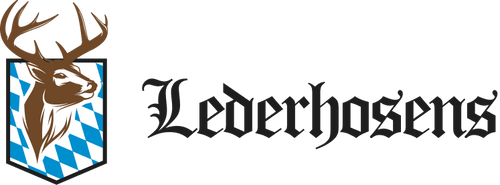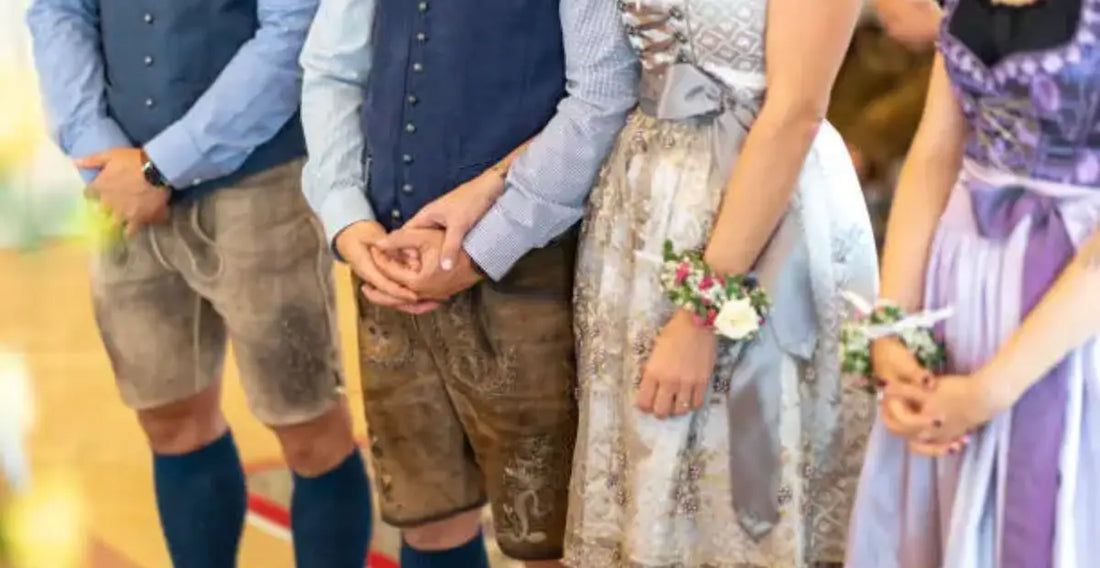Do you want to know the history of traditional Bavarian attires? Lederhosen and Dirndls are two iconic pieces of clothing often associated with Bavarian culture. These outfits are rich and centuries-old. These traditional outfits have not only served practical purposes but have also become symbols of cultural identity and pride.
In this blog, I will delve into the complete history of Dirndls and Lederhosen, exploring their origins and transformations over time. Let’s also find out the enduring significance of these outfits in contemporary Bavarian culture.
What are Lederhosen and Dirndl?
Before we delve into their history, let's first understand what Bavarian outfits are:
- Lederhosen: Lederhosen, which means leather pants in German, is a type of traditional Bavarian shorts or knee-length trousers made from leather. They are typically characterized by their distinctive suspenders and intricate embroidery, making them a symbol of Bavarian heritage.
- Dirndl: The Dirndl, on the other hand, is a traditional Bavarian dress worn by women. Dirndls are often adorned with intricate designs and colorful patterns, reflecting the rich cultural traditions of Bavaria.
|
No of components |
Dirndl components |
|
1 |
A bodice |
|
2 |
A blouse |
|
3 |
A full skirt |
|
4 |
An apron |
How Did Lederhosen and Dirndl Emerge?
The history of Lederhosen and Dirndls is intertwined with the agricultural and alpine traditions of Bavaria. Here's a closer look at how these iconic garments emerged:
Origins in Practicality
T were born out of necessity. In the rugged Alpine regions of Bavaria, durable clothing was essential for farmers, hunters, and laborers. They needed protection from the elements and rugged terrain. Leather, being a resilient material, became the obvious choice for crafting durable clothing.
Lederhosen: From Work Clothes to Symbol of Youth
Lederhosen started as functional work attire for Bavarian men. The use of leather provided protection and durability in the demanding conditions of farm work and outdoor activities. These early Lederhosen were plain and utilitarian, lacking the decorative elements we associate with them today.
However, over time, Lederhosen evolved into a symbol of youth and masculinity. They became popular attire for young boys, often worn during special occasions, festivals, and family gatherings.
The addition of decorative elements like intricate embroidery and suspenders transformed Lederhosen. Thus evolving them from mere work clothes into a symbol of Bavarian identity.
Dirndl: A Dress for Daily Life
The Dirndl, in contrast, was originally designed as everyday attire for Bavarian women. Its practical design made it suitable for housework, farming, and other daily chores. The simplicity of the early Dirndl dresses reflected the modesty and functionality needed in rural life.
Transformation | Work Clothes to National Dress
As Bavaria's cultural identity began to solidify, traditional Bavarian attires underwent significant transformations:
The Emergence of a National Costume
During the 19th century, Bavaria, like many other regions in Europe, experienced a surge in nationalism and cultural pride. This period saw a resurgence of interest in traditional clothing as a way to express Bavarian identity.
Lederhosen or Dirndls, once practical workwear, were now seen as symbols of Bavaria's unique culture. They were adopted as the national costume, and their design became more elaborate. Lederhosen, in particular, saw an increase in decorative elements, including intricate embroidery and decorative buttons, making them a fashion statement.
The Role of Royalty and Tourism
The popularity of Lederhosen or Dirndls was further fueled by Bavarian royalty. King Ludwig II, known for his eccentric taste, often wore Lederhosen during his recreational activities in the Bavarian countryside. This royal endorsement only added to the garments' allure.
The rise of tourism in Bavaria also played a significant role in the global recognition of traditional outfits. Visitors from around the world flocked to Bavaria, and many returned home with these traditional garments as souvenirs, spreading their popularity far beyond the region's borders.
The Contemporary Bavarian Clothes
In contemporary Bavaria, traditional wear continues to hold a special place in the hearts of both locals and tourists. However, they have evolved to meet the demands of modern life:
Modern Variations
While traditional Bavarian outfits remain popular for special occasions and cultural events, modern variations have emerged to suit contemporary tastes. These variations often use lighter materials and incorporate innovative designs, making them more comfortable for everyday wear.
Global Influence
Lederhosen and Dirndls have gained recognition and popularity worldwide thanks to their distinctive style and cultural significance. Fashion designers and enthusiasts worldwide have embraced elements of these traditional garments, incorporating them into modern fashion trends.
Preservation of Tradition
Despite these adaptations, Bavarians continue to take great pride in preserving their cultural traditions. Lederhosen or Dirndl are still commonly worn during Oktoberfest and other traditional Bavarian festivals. It ensures that these iconic garments remain an integral part of Bavarian culture.
Final Words!
Lederhosen and Dirndls have come a long way from their origins as practical workwear in the Bavarian Alps. They have evolved into symbols of Bavarian identity, national dress, and global fashion icons. These garments serve as a reminder of Bavaria's rich cultural heritage.
Whether worn for a special occasion or as an everyday outfit, Lederhosen, and Dirndls continue to play a vital role in connecting Bavarians to their past and celebrating their unique cultural heritage.
FAQ’s
Dirndls and lederhosen are traditional German clothing items. Dirndls are dresses typically worn by women, while lederhosen are leather shorts with suspenders worn by men.
The main difference between dirndls and lederhosen is the gender they are traditionally associated with, with dirndls for women and lederhosen for men.
A dirndl in Germany is a traditional dress consisting of a bodice, blouse, skirt, and apron, often worn during cultural events and celebrations.
A German dress called dirndl is a traditional attire worn by women in Germany, typically associated with Bavarian culture.

